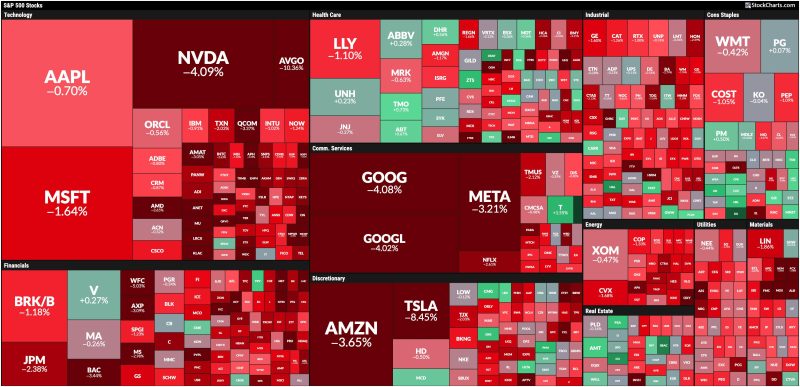
Navigating the Stock Market Storm: Positioning Your Portfolio for Success
Broad-Based Stock Market Selloff: How to Position Your Portfolio
Understanding the current state of the stock market requires a keen eye for detail and a strategic approach to portfolio management. With recent trends pointing towards a broad-based selloff in the stock market, investors are faced with the challenge of protecting their assets and positioning their portfolios for success. In this article, we will explore strategies that can help you navigate a selloff and ensure that your investments are well-positioned for the future.
1. Diversification is Key
One of the most fundamental principles of portfolio management is diversification. By spreading your investments across different asset classes, sectors, and regions, you can reduce your exposure to any single market risk. In times of market volatility, a diversified portfolio can help mitigate losses and preserve wealth. Consider re-evaluating your current asset allocation and making adjustments to ensure that you are well-diversified.
2. Focus on Quality Investments
During a stock market selloff, investors tend to gravitate towards safer, more stable companies with strong fundamentals. Look for investments in companies that have a proven track record of success, solid balance sheets, and sustainable business models. Quality investments are more likely to weather market downturns and provide long-term value to your portfolio.
3. Stay Invested for the Long Term
It can be tempting to panic and sell off your investments during a market selloff, but this knee-jerk reaction can often do more harm than good. Instead of trying to time the market, focus on your long-term investment goals and stay invested through the ups and downs. History has shown that markets tend to recover over time, and by maintaining a long-term perspective, you can ride out market volatility and benefit from potential upside in the future.
4. Consider Defensive Investments
In times of market uncertainty, defensive investments can provide stability to your portfolio. Defensive assets such as bonds, gold, and cash equivalents tend to perform well during market downturns and can help cushion the impact of a selloff on your overall portfolio. While defensive investments may not offer the same level of returns as equities, they can play a valuable role in risk management during turbulent market conditions.
5. Regularly Rebalance Your Portfolio
Market selloffs can disrupt the balance of your portfolio and lead to unintended exposures to certain risks. Regularly rebalancing your portfolio involves adjusting your asset allocation to maintain your target risk profile. By selling overperforming assets and buying underperforming assets, you can ensure that your portfolio remains aligned with your investment objectives and risk tolerance.
In conclusion, navigating a broad-based stock market selloff requires a disciplined approach and a focus on long-term investment principles. By diversifying your portfolio, focusing on quality investments, staying invested for the long term, considering defensive assets, and regularly rebalancing your portfolio, you can position yourself for success in any market environment. Remember that market volatility is a natural part of investing, and by being prepared and strategic, you can weather the storm and emerge stronger on the other side.
